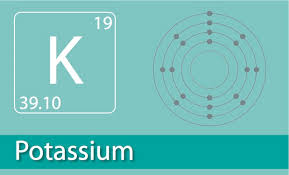
 Hyperkalemia
is a challenge in CKD and ESRD patients. The treatment agents for this
complication have been limited to bowel resins, diuretics and dialysis. There has been some recent interest in novel
agents as some evidence suggesting the efficacy of Kayexalate and side effects
leading to colonic necrosis in some settings.
Hyperkalemia
is a challenge in CKD and ESRD patients. The treatment agents for this
complication have been limited to bowel resins, diuretics and dialysis. There has been some recent interest in novel
agents as some evidence suggesting the efficacy of Kayexalate and side effects
leading to colonic necrosis in some settings.
Three articles published
this week (2 in NEJM and 1 in JAMA) give us trials of using novel K lowering
agents in three different settings.
The first trial looked at patiromer use for hyperkalemia
in CKD patients on RAAS inhibitors. The active
moiety of patiromer for oral suspension is a nonabsorbed polymer
that binds potassium in exchange for calcium in the distal colon leading to
highest K excretion possible. Patiromer is a dry powder, primarily a spherical
bead that is not absorbed and that binds potassium when mixed in small amounts of
water. It exchanges potassium for calcium, which would be of some concern if the
drug were absorbed. It appears, however, that the drug is not absorbed and that
the amount of calcium absorbed is small. In A RCT with placebo, patiromer
treatment was associated with a decrease in serum potassium levels and, as
compared with placebo, a reduction in the recurrence of hyperkalemia.
Mild-to-moderate constipation was the most common adverse event (in 11% of the
patients); hypokalemia occurred in 3%.
The second trial looked at zirconium cyclosilicate (ZS-9), a novel
selective cation exchanger, could lower serum potassium levels in patients with
hyperkalemia. ZS-9 is a compound with a crystalline structure
that traps potassium 10 times as much
potassium as kayexalate does. It is insoluble and remains in the intestine
during transit. This was in a variety of diagnosis leading to hyperkalemia in
over 700 patients. There was an initial phase and then a maintenance phase. Patients
with hyperkalemia who received ZS-9, as compared with those who received
placebo, had a significant reduction in potassium levels at 48 hours, with normokalemia
maintained during 12 days of maintenance therapy per their conclusion
The
third trial titled HARMONIZE was a phase 3, multicenter,
randomized,
double-blind, placebo-controlled trial
evaluating zirconium cyclosilicate in outpatients with hyperkalemia (serum
potassium_5.1mEq/L) . Among outpatients with hyperkalemia, sodium zirconium
cyclosilicate reduced serum potassium to normal levels within 48 hours;
compared with placebo, all 3 doses of zirconium cyclosilicate resulted in lower
potassium levels and a higher proportion of patients with normal potassium
levels for up to 28 days.
Two accompanying editorials are in NEJM and JAMA as well
Few questions still remain and are a concern:
Since all 3 trials were pharmaceutical
company sponsored, placebo was used to compare the agents for efficacy. Why not
kayexalate?- it works and it’s cheaper. The authors in one study did state that
the agent was not compared to sodium or calcium polystyrene since prospective studies are lacking in the
later and also agents cause bowel necrosis.
But there are significant years of
experience and pathophysiology that it works.
Side effects are part and parcel of every agent. The above agents had
constipation as side effect, and some might have calcium and magnesium concerns
if used long term given how they work. Also all three trials were very short
term and long term trials are needed still.
FDA approval is
also warranted before any use.
Nevertheless, the patients we have
that have CKD and or heart failure and we really want them to be on ACEI, ARB
or aldactone but cannot due to K related concerns and or require diuretics with
them:- now we may have an alternative option for the situation.

